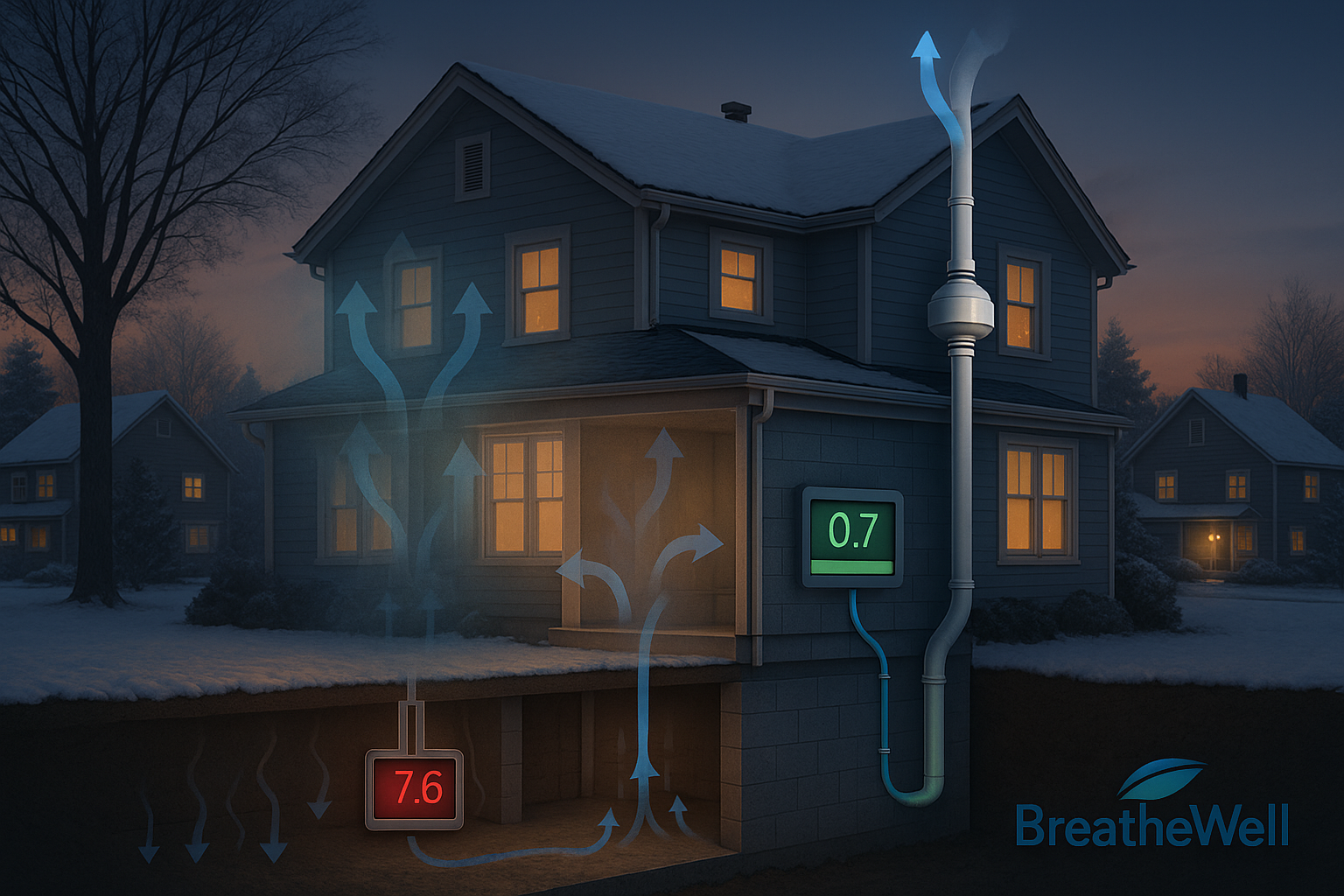Do I Need to Replace My Radon Fan? 7 Signs It’s Time
For Homeowners in Madison, WI

Radon mitigation systems work quietly in the background to keep your Madison home safe. The radon fan is the engine of that system, creating constant suction to vent radon gas outdoors. Like any continuously running motor, it won’t last forever. Most radon fans operate reliably for 5–10 years, depending on usage, brand, and exposure to Wisconsin’s freeze–thaw cycles. If your fan starts to fail, radon levels can rise quickly—especially in Dane County’s high-risk soils.
Below are seven clear signs it may be time to replace your radon fan, plus what to do next to protect your family and investment.
7 Signs It’s Time to Replace Your Radon Fan
1) The fan suddenly goes silent
Your mitigation fan should run 24/7. If the familiar hum stops, the system isn’t pulling radon from beneath the slab. In our area, levels can spike in a matter of days when suction is lost.
2) New, loud, or uneven noises
Grinding, rattling, or a high-pitched whine usually points to worn bearings or an unbalanced impeller. Long winters and temperature swings around Madison can accelerate wear on outdoor fans and attic-mounted units.
3) Your radon test results are creeping up
If a short-term or continuous monitor shows higher readings than usual—even while the fan is “on”—airflow may have dropped. A weakening motor can spin, but not move enough air to keep levels low.
4) Manometer/pressure gauge shows low or flat suction
That U-tube on your vent stack is your system’s heartbeat. A reading that’s flat, lower than normal, or drifting over time signals reduced negative pressure. That often means the fan is failing or there’s a blockage.
5) Visible moisture, rust, or icing
Condensation, water streaks, or corrosion on the fan housing or wiring is a red flag. Wisconsin humidity, spring rains, and winter icing can push moisture into the housing, degrading performance and safety.
6) Unexplained energy-bill increases
A failing motor can draw more power as it struggles to maintain airflow. If your electric bill bumps up without another clear cause, the radon fan may be working overtime—and heading toward failure.
7) The unit is 7–10+ years old
Even premium fans have a service life. Past the 7–10-year mark, breakdowns become far more common. Proactive replacement is cheaper than emergency service—and it prevents sudden radon spikes.
Why Timely Replacement Matters in Madison
Radon is odorless and invisible, but its health risks are well-documented. In high-potential zones around Madison, a strong, continuous exhaust is essential. Delaying replacement can mean days or weeks of elevated exposure—and that’s not worth the risk.
What to Do If You Spot These Signs
- Check the manometer. Note the current reading and compare it to your usual baseline.
- Run a follow-up test. A quick short-term test or a 48-hour digital check can confirm elevated levels.
- Inspect the fan visually. Look for corrosion, loose connections, icing, or vibration.
- Call a specialist. Replacement isn’t just swapping parts. Correct sizing, sealed connections, and code-compliant venting ensure the fix actually lowers radon.
Ready to work with BreatheWell Radon Solutions?
If testing has shown your Madison home has elevated radon levels, the next step is clear: mitigation.
Every day you wait is another day of unnecessary exposure.
Call:
(608) 820-8394
Email:
breathewellmadison@gmail.com



